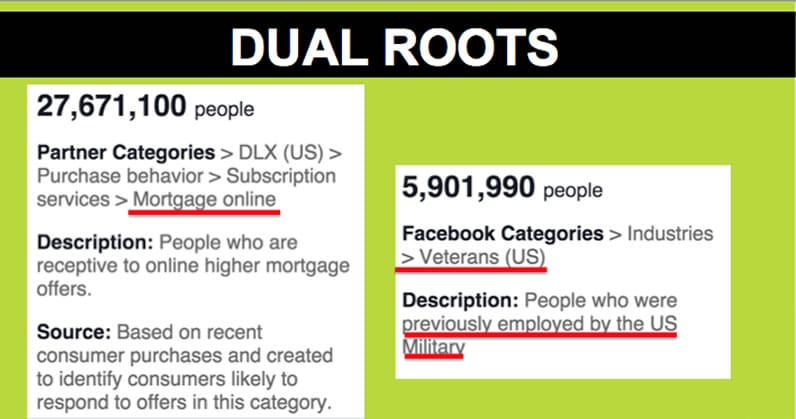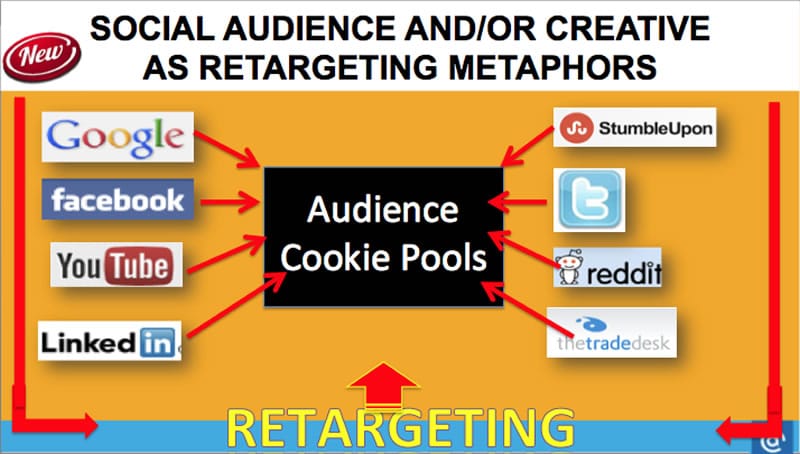Historically, social media marketing KPIs were delightfully warm and fuzzy, hinged on appropriately ubiquitous presence, engagement, community, content distribution, quantifiable loyalty, retention and service. No doubt, these are completely worthy metrics. All still apply. All are crucial. They’re not nearly enough anymore.
It’s not news to most social marketing players that over the last few years and with the advent of ever-more reliable attribution analytics, social marketing KPIs have become deeper, more tangible, rooted in verifiable pathway-to-conversion and ultimately revenue. Now, these hard metrics are not enough either.
The new expectation for social marketers is that they will provide team curated, owned-audience cookie pools for performance marketers to exploit.
Paid-Organic Social Marketing
By way of background, most serious commercial social marketers undertake some degree of editorial calendar-based paid organic (looking) social psychographic content amplification against content marketing KPIs. The goals are scalable psychographic visitors to our own website, attributable conversion, influencer distribution (for links, community and social signals), PR dissemination and (as such) organic search algorithm safety (Google, Bing, etc.).
Whilst some marketers bemoan the precipitous decline of free social distribution leading to this industrial reality, in fact amplification is better than organic-only because of the profoundly focused paid social targeting available.
Here’s an example. Say we’re marketing VA mortgages. The Facebook persona might begin with dual roots. Targeted users must be United States veterans (Facebook data) AND have online mortgage affinities (DataLogix).
Filter these roots additionally with active interests, further clarifying interest in home upgrades.

No matter which team handles content amplification, the NEW expectation for social marketers is to curate audience based omnichannel retargeting/remarketing pools.
- Performance display marketers will tailor filtered retargeting/remarketing creative at the audience level after removing converted visitors. Truly the last mile of psychographic targeting is creative.
- Search pay-per-click marketers will run RLSA (remarketing lists for search ads) campaigns to the psychographic segments. Essentially this means running special AdWords search PPC campaigns JUST to these audiences, thus establishing the “credentials” behind the query. This is the hottest tactic in the world today.
Whenever social marketers drive über focused psychographic audience visitors into a marketing system, their new job is to keep track of the audiences as the retargeting/remarketing metaphor, as opposed to using page touch addresses as the metaphor.
Buying “Owned Audience” Data From Data Brokers
Think about it. Keeping track of inbound targeting as the metaphor for building out cookie pools essentially means you’re buying the data from the referring community and building lists of owned audiences. A common result for paid social is that marketers get too little conversion at too high an average cost. The curated audience approach means that, regardless of conversion on the first targeting pass, we’re curating the data into audiences we work until we’re done proving what can and cannot be accomplished with that audience. Owned audiences therefore become brand assets, not unlike brand keywords, which we keep as corporate treasure, possessions we hold, covet and leverage.

Traditionally, social media marketing goals were amusingly earnest and organic, based on properly being in-channel, interacting, building community, content distribution, measurable loyalty, retention and serving users. Certainly, these are praiseworthy objectives. All are fundamental. All are essential. These classic KPIs are not near sufficient in themselves today.
Social marketers understand that over the last few years, as deeper attribution analytics evolved, social marketing goals have become richer, more concrete, entrenched in confirmable pathway-to-conversion and revenue. Now, even these notable metrics are not enough.
The new expectation for social marketers is that they will provide team curated, owned-audience cookie pools for performance marketers to exploit.













